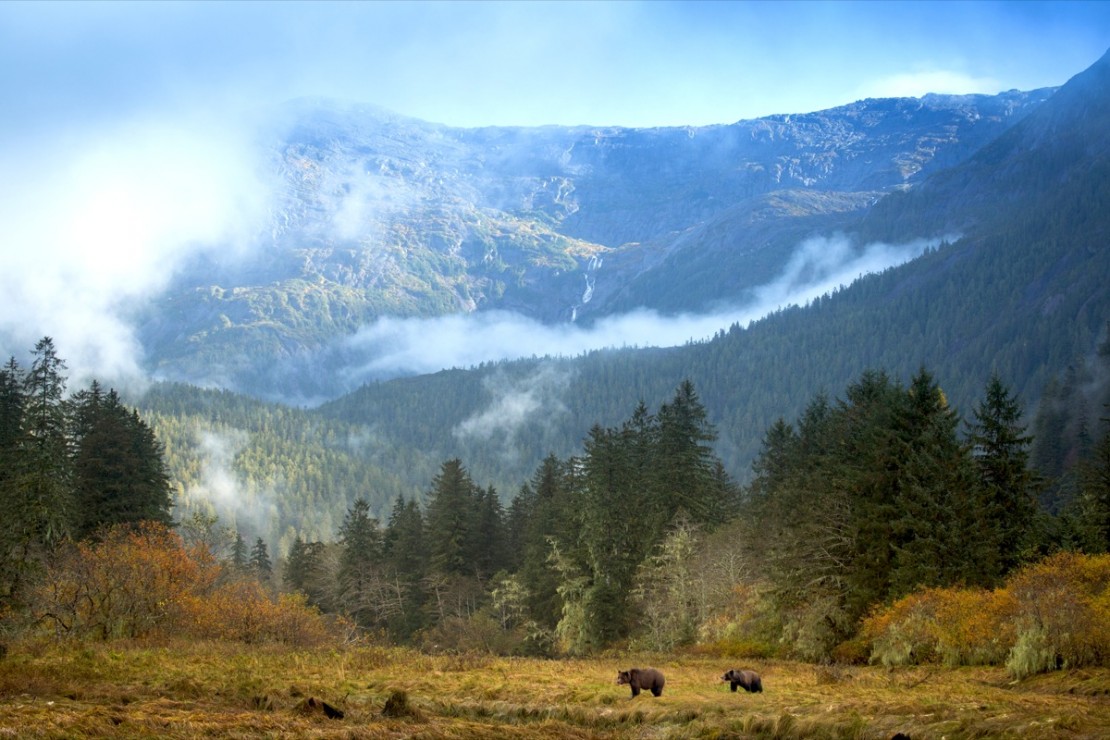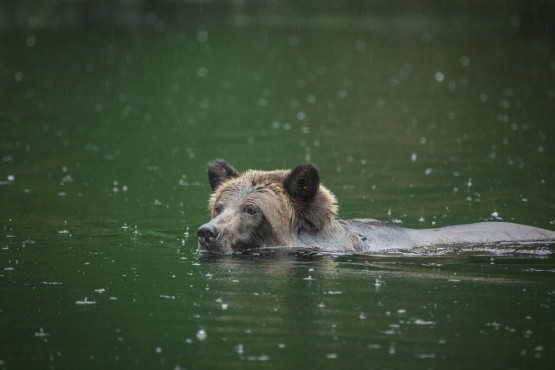
Provided (photo)
B.C. grizzlies are on the move, according to new research by UVic PhD candidate Christina Service, who has been monitoring the range expansion of grizzly bears along with the Spirit Bear Research Foundation and Raincoast Conservation Foundation since 2011. Once thought to exist only on the mainland, Service found evidence of grizzly bears on 10 central coast islands, including Princess Royal, Klemtu, and Bella Bella, extending their home range beyond B.C.’s designated conservation boundaries.
“If grizzly bears are a species of conservation concern, like they are in B.C., we should keep tabs on where they are and adaptively manage for this [range expansion],” Service said. Service’s recent discoveries have the potential to extend legally enforceable habitat protection to the coastal islands.
“As a conservation biologist, it’s exciting to produce research that can have real teeth on the ground in terms of conservation management,” Service admitted; however, the impact of Service’s work goes beyond habitat protection. Her most recent project also provides an excellent case study in combining indigenous ecological knowledge with non-invasive scientific methods like remote camera monitoring and DNA analysis via hair snags.
According to Service, the interview data that she and her colleagues collected while discussing grizzly sightings with locals on the coast “gives an idea of how quickly the range expansion has happened” and provides “far greater temporal breadth” than their science tools could alone.

Provided (photo)
Douglas Neasloss, the Resource Stewardship director of the Kitasoo/Xais-xais Nation, brought the project to Raincoast Conservation Foundation, making the collaboration between traditional ecological knowledge and conventional science an integral part of the research process. In an email to the Martlet, UVic grad and Raincoast research scientist Chris Darimont wrote that “this is the way of the future in B.C., as Indigenous governments reassert the stewardship of lands and resources from a province that has in essence either permitted or encouraged reckless development of resources.”
Field crews for the project were largely staffed by local communities and all of the data sharing protocols and research questions were formed in collaboration with the Kitasoo/Xais-xais and Heiltsuk Nations. “People on the ground that are hunting and fishing and living with these charismatic mega-fauna have a far better idea of where they are than scientists parachuting in for a couple months a year,” Service explained.
The Spirit Bear Research Foundation and Raincoast Conservation Foundation are just beginning to determine why grizzlies chose the shelter of coastal island life, but Service believes that the combination of Indigenous knowledge and conventional science has been instrumental in filling some of the gaps: “The take away from this is that we need to be able to combine these different knowledge forms meaningfully and incorporate local knowledge [into conservation management].”
This project is only a single chapter in Service’s research, which, given time, will look at how bears of all shapes and sizes distribute the declining stocks of salmon on our coasts. DNA analysis on grizzly hair, gathered using a calorie-free scent lure and hair snags, not only reveals the gender of an individual bear, but also how much salmon it has eaten. Service is particularly interested in discovering how the rare white Spirit Bear will fare with grizzlies expanding their territory. If Service has made any discoveries about how grizzlies, black bears, and spirit bears divvy salmon resources, she isn’t willing to disclose them: “Talk to me in 14 months.”








